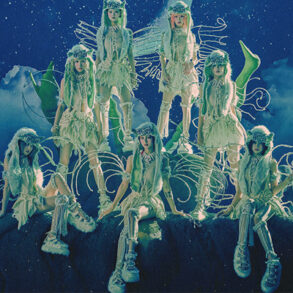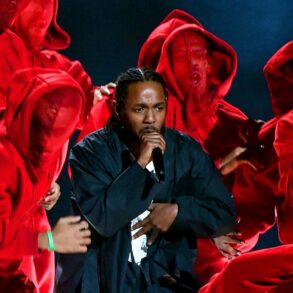
More often heralded for their fandom than their artistic contributions, teenage girls have been a driving force in hip-hop since its inception. After all, it was a teen girl, Cindy Campbell, who came up with the idea to host the back-to-school fundraiser that jumpstarted hip-hop in 1973.
Though their names may not be the first to be mentioned in mainstream conversation, young women in hip-hop paved the way for teen artists such as Brandy and Monica, Aaliyah and Destiny’s Child that would shape culture in the late ’90s and early aughts. The stories of these groundbreaking young women aren’t always fairy tales — some are cautionary and some tragic — but all soar as examples of making space for themselves, sometimes as “the only” in a world dominated by adult men.
The current bloom of new female rappers have learned and taken inspiration from these innovators. Rappers like Latto, who launched via the reality show “The Rap Game” at 16, and even had the foresight to turn down the contract offered to her as a reality show winner and seek a more equitable deal for herself.
As hip-hop celebrates its 50th birthday, take a moment to celebrate these often under unsung, underaged, innovators.
MC Sha-Rock
Heralded as “the mother of the mic” Sharon Green a.k.a. MC Sha-Rock spent her childhood exploring slam poetry. She was well-seasoned in the art of rhyming by the time she auditioned for the Funky Four Plus One at age 17.
Her verse in “That’s the Joint” carries a marked cadence we hear mimicked to this day. At 19, Sha-Rock introduced the world to hip-hop on “Saturday Night Live” as a guest of Blondie’s Debbie Harry.
Daisy Castro
Born of Latin break and Afro-Caribbean rhythms the dance moves that accompanied these melded beats soon became an essential element of hip-hop. The first female member of the Bronx born Rock Steady Crew, early B-girl Daisy Castro a.k.a. Baby Love was only 14 when she took to breaking, finding her petite teen frame perfect for the complicated moves.
During her three years in the Rock Steady Crew,she saw breakdancing break into the mainstream via films like Flashdance and Beat Street.
Roxanne Shanté
Fourteen-year-old Lolita Roxanne Shanté was neighbors with hip-hop luminary DJ Marley Marl, who asked her to lay down a response track while the teen was on her way to do laundry. On the fly she set the blueprint for all diss tracks to follow, laying down a verse on top of “Roxanne, Roxanne” by UTFO.
That freestyle, “Roxanne’s Revenge,” brought her fame, but the scene refused to recognize her as a singular talent. In 1985 at 15, she competed head-to-head in an otherwise all-male field in a the infamous “The Battle for World Supremacy.” Despite battling and defeating 12 men for the title, Roxanne was told by the judge that the burgeoning art form would not be viewed as legitimate if a 15-year-old girl won and the contest was thrown against her.
“Roxanne’s Revenge” had made its mark, however, and she inspired a generation of young female MCs.
Lisa Leone
Though she would go on to direct on the big and small screen, Lisa Leone’s career as a hip-hop photographer dates back to her teens, where she majored in photography at the High School of Art and Design. “[People] would ask me to take pictures for them (for) publicity photos,” She told Dazed in 2016. “So it was kind of a natural way, being there and photographing what you loved and in front of your face every day, you know just your friends. At the time, I would never have imagined that it (would) become what it was because we were kids.”
Her early work parlayed her into one of hip-hop’s most respected documentarians, capturing Snoop, Biggie, Nas and others during rap’s explosion in the early ’90s.
J.J. Fad
With their hit single “Supersonic,” J.J. Fad’s success helped build Eazy E’s Ruthless Records label and fund NWA’s debut record.
Though the group started as a quintet, its incarnation as a trio with Juana Burns (MC J.B.), Dana Birks (Baby-D), and then middle-schooler Michelle Franklin (Sassy C.) they would find their musical footing.
More than a novelty J.J. Fad were serious on the mic, going on long freestyle runs, as evidenced by the live clip below (which is very worth watching till the end).
L’Trimm
High Schoolers Bunny D and Lady Tigra provided a more wholesome entry point to the notoriously raunchy Miami bass scene with their 1988 smash “Cars That Go Boom Despite releasing two more records for Altalic, they were never able to replicate the single’s success. The song would go on to be included in Rolling Stone’s Top 100 Hip Hop Songs of All Time.
The duo released three albums for Atlantic Records before disbanding in the early ’90s. Lady Tigra would stick with music going on to write jingles, perform on “Yo Gabba Gabba,” and become a fixture on both the New York and Miami club scenes.
Spinderella
When a classmate asked a 16-year-old Deidre Muriel Roper if she was interested in joining a female rap duo in Queens, she had already been working the turntables for two years.Inspired by her fathers extensive record collection, Dee Dee as she was then known, had become a noted DJ in Brooklyn and as DJ Spinderella, she joined forces with Salt-n-Pepa to create one of the best selling hip-hop acts of the 1990s.
While female fronted rap acts began to proliferate the mainstream, Spinderella remains one of the most prominent femme DJs in the game. She also produced several Salt-n-Pepa tracks and is, of course, is an MC in her own right.
Angie Martinez
Now considered one of hip-hop’s most prominent radio hosts and interviewers, Angie Martinez got her start as a teen answering call-in lines for New York station Hot 97.
Under the mentorship of Funk Master Flex, Martinez rose to radio prominence earning the moniker “The Voice of New York.” She has also dabbled in acting and flirted with MCing, joining the all-star cast of Lil Kim’s “Not Tonight” Remix.
Misa Hylton
Misa Hylton was a 17-year-old intern at Uptown Records when she, went toe-to-toe with label President Andre Herrell. She insisted that group who would go on to be known as “The Bad Boys of R&B” or Jodeci should break with R&B convention, ditch the suited-up attire of their predecessors, and adopt street wear as their signature look.
She would change the course of hip-hop fashion, again, collaborating with Lil’ Kim on her “Crush on You” video and iconic purple playsuit (and pastie) VMA’s look. Still impacting Hip Hop style, Hylton is responsible for looks like Beyonce and Jay-Z’s infamous, his and hers, pastel suits in the video for “Apes—.”
6 Takeaways From Netflix’s “Ladies First: A Story Of Women In Hip-Hop”





